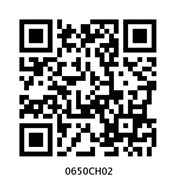Table of Contents
Chapter 2
Whole Numbers
2.1 Introduction
As we know, we use 1, 2, 3, 4,... when we begin to count. They come naturally when we start counting. Hence, mathematicians call the counting numbers as Natural numbers.
Predecessor and successor
Given any natural number, you can add 1 to that number and get the next number i.e. you get its successor.
The successor of 16 is 16 + 1 = 17, that of 19 is 19 +1 = 20 and so on.
The number 16 comes before 17, we say that the predecessor of 17 is 17–1=16, the predecessor of 20 is 20 – 1 = 19, and so on.
1. Write the predecessor and successor of 19; 1997; 12000; 49; 100000.
2. Is there any natural number that has no predecessor?
3. Is there any natural number which has no successor? Is there a last natural number?
The number 3 has a predecessor and a successor. What about 2? The successor is 3 and the predecessor is 1. Does 1 have both a successor and a predecessor?

We can count the number of children in our school; we can also count the number of people in a city; we can count the number of people in India. The number of people in the whole world can also be counted. We may not be able to count the number of stars in the sky or the number of hair on our heads but if we are able, there would be a number for them also. We can then add one more to such a number and get a larger number. In that case we can even write the number of hair on two heads taken together.
It is now perhaps obvious that there is no largest number. Apart from these questions shared above, there are many others that can come to our mind when we work with natural numbers. You can think of a few such questions and discuss them with your friends. You may not clearly know the answers to many of them !
2.2 Whole Numbers
We have seen that the number 1 has no predecessor in natural numbers. To the collection of natural numbers we add zero as the predecessor for 1.
The natural numbers along with zero form the collection of whole numbers.
In your previous classes you have learnt to perform all the basic operations like addition, subtraction, multiplication and division on numbers. You also know how to apply them to problems. Let us try them on a number line. Before we proceed, let us find out what a number line is!
1. Are all natural numbers also whole numbers?
2. Are all whole numbers also natural numbers?
3. Which is the greatest whole number?
2.3 The Number Line
Draw a line. Mark a point on it. Label it 0. Mark a second point to the right of 0. Label it 1.
The distance between these points labelled as 0 and 1 is called unit distance. On this line, mark a point to the right of 1 and at unit distance from 1 and label it 2. In this way go on labelling points at unit distances as 3, 4, 5,... on the line. You can go to any whole number on the right in this manner.
This is a number line for the whole numbers.

What is the distance between the points 2 and 4? Certainly, it is 2 units. Can you tell the distance between the points 2 and 6, between 2 and 7?
On the number line you will see that the number 7 is on the right of 4. This number 7 is greater than 4, i.e. 7 > 4. The number 8 lies on the right of 6 and 8 > 6. These observations help us to say that, out of any two whole numbers, the number on the right of the other number is the greater number. We can also say that whole number on left is the smaller number.
For example, 4 < 9; 4 is on the left of 9. Similarly, 12 > 5; 12 is to the right of 5.
What can you say about 10 and 20?
Mark 30, 12, 18 on the number line. Which number is at the farthest left? Can you say from 1005 and 9756, which number would be on the right relative to the other number.
Place the successor of 12 and the predecessor of 7 on the number line.
Addition on the number line
Addition of whole numbers can be shown on the number line. Let us see the addition of 3 and 4.

Start from 3. Since we add 4 to this number so we make 4 jumps to the right; from 3 to 4, 4 to 5, 5 to 6 and 6 to 7 as shown above. The tip of the last arrow in the fourth jump is at 7.
The sum of 3 and 4 is 7, i.e. 3 + 4 = 7.
![]()
Find 4 + 5; 2 + 6; 3 + 5 and 1+6 using the number line.
Subtraction on the number line
The subtraction of two whole numbers can also be shown on the number line.
Let us find 7 – 5.

Start from 7. Since 5 is being subtracted, so move towards left with 1 jump of 1 unit. Make 5 such jumps. We reach the point 2. We get 7 – 5 = 2.
![]()
Find 8 – 3; 6 – 2; 9 – 6 using the number line.
Multiplication on the number line
We now see the multiplication of whole numbers on the number line.
Let us find 4 × 3.

Start from 0, move 3 units at a time to the right, make such 4 moves. Where do you reach? You will reach 12.
So, we say, 3 × 4 = 12.
![]()
Find 2 × 6; 3 × 3; 4 × 2 using the number line.
Exercise 2.1
1. Write the next three natural numbers after 10999.
2. Write the three whole numbers occurring just before 10001.
3. Which is the smallest whole number?
4. How many whole numbers are there between 32 and 53?
5. Write the successor of :
(a) 2440701 (b) 100199 (c) 1099999 (d) 2345670
6. Write the predecessor of :
(a) 94 (b) 10000 (c) 208090 (d) 7654321
7. In each of the following pairs of numbers, state which whole number is on the left of the other number on the number line. Also write them with the appropriate sign (>, <) between them.
(a) 530, 503 (b) 370, 307 (c) 98765, 56789 (d) 9830415, 10023001
8. Which of the following statements are true (T) and which are false (F) ?
(a) Zero is the smallest natural number. (b) 400 is the predecessor of 399.
(c) Zero is the smallest whole number. (d) 600 is the successor of 599.
(e) All natural numbers are whole numbers.
(f) All whole numbers are natural numbers.
(g) The predecessor of a two digit number is never a single digit number.
(h) 1 is the smallest whole number.
(i) The natural number 1 has no predecessor.
(j) The whole number 1 has no predecessor.
(k) The whole number 13 lies between 11 and 12.
(l) The whole number 0 has no predecessor.
(m) The successor of a two digit number is always a two digit number.
2.4 Properties of Whole Numbers
When we look into various operations on numbers closely, we notice several properties of whole numbers. These properties help us to understand the numbers better. Moreover, they make calculations under certain operations very simple.
Let each one of you in the class take any two whole numbers and add them.
Is the result always a whole number?
Your additions may be like this:

Try with five other pairs of numbers. Is the sum always a whole number?
Did you find a pair of whole numbers whose sum is not a whole number? Hence, we say that sum of any two whole numbers is a whole number i.e. the collection of whole numbers is closed under addition. This property is known as the closure property for addition of whole numbers.
Are the whole numbers closed under multiplication too? How will you check it?
Your multiplications may be like this :

The multiplication of two whole numbers is also found to be a whole number again. We say that the system of whole numbers is closed under multiplication.
Closure property : Whole numbers are closed under addition and also under multiplication.
Think, discuss and write
1. The whole numbers
are not closed under subtraction. Why?
Your subtractions may be like this :

2. Are the whole numbers closed under division? No. Observe this table :

Division by zero
Division by a number means subtracting that number repeatedly.
Let us find 8 ÷ 2.


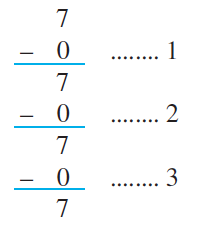
Again, we never get 0 at any stage of subtraction.
We say 7 ÷ 0 is not defined.
Check it for 5 ÷ 0, 16 ÷ 0.
Division of a whole number by 0 is not defined.
Commutativity of addition and multiplication
What do the following number line diagrams say?

In both the cases we reach 5. So, 3 + 2 is same as 2 + 3.

Similarly, 5 + 3 is same as 3 + 5.
Try it for 4 + 6 and 6 + 4.
Is this true when any two whole numbers are added? Check it. You will not get any pair of whole numbers for which the sum is different when the order of addition is changed.
![]()
You can add two whole numbers in any order.
We say that addition is commutative for whole numbers. This property is known as commutativity for addition.
Discuss with your friends
You have a small party at home. You want to arrange 6 rows of chairs with 8 chairs in each row for the visitors. The number of chairs you will need is 6 × 8. You find that the room is not wide enough to accommodate rows of 8 chairs. You decide to have 8 rows of chairs with 6 chairs in each row. How many chairs do you require now? Will you require more number of chairs?

Is there a commutative property of multiplication?
Multiply numbers 4 and 5 in different orders.
You will observe that 4 × 5 = 5 × 4.
Is it true for the numbers 3 and 6; 5 and 7 also?
![]()
You can multiply two whole numbers in any order.
We say multiplication is commutative for whole numbers.
Thus, addition and multiplication are commutative for whole numbers.
Verify :
(i) Subtraction is not commutative for whole numbers. Use at least three different pairs of numbers to verify it.
(ii) Is (6 ÷ 3) same as (3 ÷ 6)?
Justify it by taking few more combinations of whole numbers.
Associativity of addition and multiplication
Observe the following diagrams :
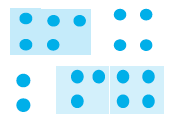
(a) (2 + 3) + 4 = 5 + 4 = 9
(b) 2 + (3 + 4) = 2 + 7 = 9
In (a) above, you can add 2 and 3 first and then add 4 to the sum and
in (b) you can add 3 and 4 first and then add 2 to the sum.
Are not the results same?
We also have, (5 + 7) + 3 = 12 + 3 = 15 and 5 + (7 + 3) = 5 + 10 = 15.
So, (5 + 7) + 3 = 5 + (7 + 3)
This is associativity of addition for whole numbers.
Check it for the numbers 2, 8 and 6.
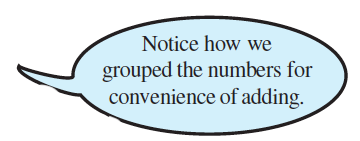
Example 1 : Add the numbers 234, 197 and 103.
Solution : 234 + 197 + 103 = 234 + (197 + 103)
= 234 + 300 = 534
Play this game
You and your friend can play this.
You call a number from 1 to 10. Your friend now adds to this number any number from 1 to 10. Then it is your turn. You both play alternately. The winner is the one who reaches 100 first. If you always want to win the game, what will be your strategy or plan?
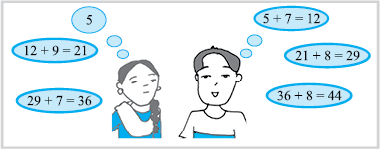
Observe the multiplication fact illustrated by the following diagrams (Fig 2.1).

Count the number of dots in Fig 2.1 (a) and Fig 2.1 (b). What do you get? The number of dots is the same. In Fig 2.1 (a), we have 2 × 3 dots in each box. So, the total number of dots is (2 × 3) × 4 = 24.
In Fig 2.1 (b), each box has 3 × 4 dots, so in all there are 2 × (3 × 4) = 24 dots. Thus, (2 × 3) × 4 = 2 × (3 × 4). Similarly, you can see that (3 × 5) × 4 = 3 × (5 × 4)
Try this for (5 × 6) × 2 and 5 × (6 × 2); (3 × 6) × 4 and 3 × (6 × 4).
This is associative property for multiplication of whole numbers.
Think on and find :
Which is easier and why?
(a) (6 × 5) × 3 or 6 × (5 × 3)
(b) (9 × 4) × 25 or 9 × (4 × 25)
Example 2 : Find 14 + 17 + 6 in two ways.
Solution : (14 + 17) + 6 = 31 + 6 = 37,
14 + 17 + 6 = 14 + 6 + 17 = (14 + 6) + 17 = 20 + 17 = 37
Here, you have used a combination of associative and commutative properties for addition.
Do you think using the commutative and the associative property has made the calculation easier?
![]()
Find : 7 + 18 + 13; 16 + 12 + 4
The associative property of multiplication is very useful in the following types of sums.
Example 3 : Find 12 × 35.
Solution : 12 × 35 = (6 × 2) × 35 = 6 × (2 × 35) = 6 × 70 = 420.
In the above example, we have used associativity to get the advantage of multiplying the smallest even number by a multiple of 5.
Example 4 : Find 8 × 1769 × 125
Solution : 8 × 1769 × 125 = 8 × 125 × 1769
(What property do you use here?)
= (8 × 125) × 1769
= 1000 × 1769 = 17,69,000.
![]()
Find : 25 × 8358 × 4 ; 625 × 3759 × 8
Think, discuss and write
Is (16 ÷ 4) ÷ 2 = 16 ÷ (4 ÷ 2)?
Is there an associative property for division? No.
Discuss with your friends. Think of (28 ÷ 14) ÷ 2 and 28 ÷ (14 ÷ 2).
Distributivity of multiplication over addition
Take a graph paper of size 6 cm by 8 cm having squares of size 1 cm × 1 cm.
How many squares do you have in all?


Is the number 6 × 8?
Now cut the sheet into two pieces of sizes 6 cm by 5 cm and 6 cm by 3 cm, as shown in the figure.


Number of squares : Is it 6 × 5? Number of squares : Is it 6 × 3?
In all, how many squares are there in both the pieces?
Is it (6 × 5) + (6 × 3)? Does it mean that 6 × 8 = (6 × 5) + (6 × 3)?
But, 6 × 8 = 6 × (5 + 3)
Does this show that 6 × (5 + 3) = (6 × 5) + (6 × 3)?
Similarly, you will find that 2 × (3 + 5) = (2 × 3) + (2 × 5)
This is known as distributivity of multiplication over addition.
find using distributivity : 4 × (5 + 8) ; 6 × (7 + 9); 7 × (11 + 9).
Think, discuss and write
Observe the following multiplication and discuss whether we use here the idea of distributivity of multiplication over addition.
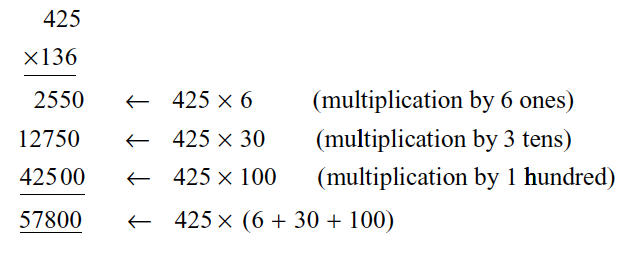
Example 5 : The school canteen charges ₹ 20 for lunch and ₹ 4 for milk for each day. How much money do you spend in 5 days on these things?
Solution : This can be found by two methods.
Method 1 : Find the amount for lunch for 5 days.
Find the amount for milk for 5 days.
Then add i.e.
Cost of lunch = 5 × 20 = ₹ 100
Cost of milk = 5 × 4 = ₹ 20
Total cost = ₹ (100 + 20) = ₹ 120

Method 2 : Find the total amount for one day.
Then multiply it by 5 i.e.
Cost of (lunch + milk) for one day = ₹ (20 + 4)
Cost for 5 days = ₹ 5 × (20 + 4) = ₹ (5 × 24)
= ₹ 120.
The example shows that
5 × (20 + 4) = (5 × 20) + (5 × 4)
This is the principle of distributivity of multiplication over addition.
Example 6 : Find 12 × 35 using distributivity.
Solution : 12 × 35 = 12 × (30 + 5)
= 12 × 30 +12 × 5
= 360 + 60 = 420
![]()
Find 15 × 68; 17 × 23; 69 × 78 + 22 × 69 using distributive property.
Solution : 126 × 55 + 126 × 45 = 126 × (55 + 45)
= 126 × 100
= 12600.
Identity (for addition and multiplication)
How is the collection of whole numbers different from the collection of natural numbers? It is just the presence of ‘zero’ in the collection of whole numbers. This number ‘zero’ has a special role in addition. The following table will help you guess the role.
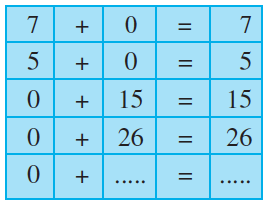
When you add zero to any whole number what is the result?
It is the same whole number again! Zero is called an identity for addition of whole numbers or additive identity for whole numbers.
Zero has a special role in multiplication too. Any number when multiplied by zero becomes zero!
Find 15 × 68; 17 × 23;
69 × 78 + 22 × 69 using distributive property.
For example, observe the pattern :
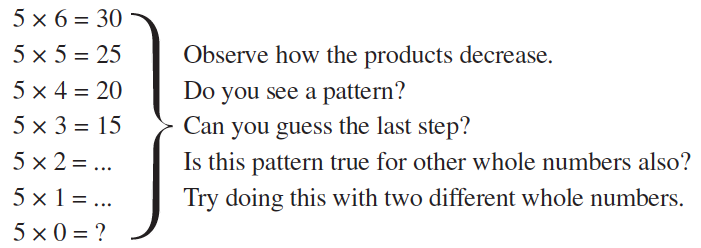
You came across an additive identity for whole numbers. A number remains unchanged when added to zero. Similar is the case for a multiplicative identity for whole numbers. Observe this table.
You are right. 1 is the identity for multiplication of whole numbers or multiplicative identity for whole numbers.
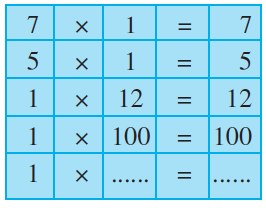
Exercise 2.2
1. Find the sum by suitable rearrangement:
(a) 837 + 208 + 363 (b) 1962 + 453 + 1538 + 647
2. Find the product by suitable rearrangement:
(a) 2 × 1768 × 50 (b) 4 × 166 × 25 (c) 8 × 291 × 125
(d) 625 × 279 × 16 (e) 285 × 5 × 60 (f) 125 × 40 × 8 × 25
3. Find the value of the following:
(a) 297 × 17 + 297 × 3 (b) 54279 × 92 + 8 × 54279
(c) 81265 × 169 – 81265 × 69 (d) 3845 × 5 × 782 + 769 × 25 × 218
4. Find the product using suitable properties.
(a) 738 × 103 (b) 854 × 102 (c) 258 × 1008 (d) 1005 × 168
5. A taxidriver filled his car petrol tank with 40 litres of petrol on Monday. The next day, he filled the tank with 50 litres of petrol. If the petrol costs ₹ 44 per litre, how much did he spend in all on petrol?
6. A vendor supplies 32 litres of milk to a hotel in the morning and
68 litres of milk in the evening. If the milk costs ` 45 per litre,
how much money is due to the vendor per day?
7. Match the following:
(i) 425 × 136 = 425 × (6 + 30 +100) (a) Commutativity under multiplication.
(ii) 2 × 49 × 50 = 2 × 50 × 49 (b) Commutativity under addition.
(iii) 80 + 2005 + 20 = 80 + 20 + 2005 (c) Distributivity of multiplication
over addition.
2.5 Patterns in Whole Numbers
We shall try to arrange numbers in elementary shapes made up of dots. The shapes we take are (1) a line (2) a rectangle (3) a square and (4) a triangle. Every number should be arranged in one of these shapes. No other shape is allowed.
Every number can be arranged as a line;
The number 2 is shown as
The number 3 is shown as
and so on.
Some numbers can be shown also as rectangles.
For example,
The number 6 can be shown as
a rectangle. Note there are 2
rows and 3 columns.
Some numbers like 4 or 9 can also be arranged as squares;

Some numbers can also be arranged as triangles.
For example,

Note that the triangle should have its two sides equal. The number of dots in the rows starting from the bottom row should be like 4, 3, 2, 1.
The top row should always have 1 dot.
Now, complete the table :

![]()
1. Which numbers can be shown only as a line?
2. Which can be shown as squares?
3. Which can be shown as rectangles?
4. Write down the first seven numbers that can be arranged as triangles,
e.g. 3, 6, ...
5. Some numbers can be shown by two rectangles, for example,

Give at least five other such examples.
Patterns Observation
Observation of patterns can guide you in simplifying processes. Study the following:
(a) 117 + 9 = 117 + 10 – 1 = 127 – 1 = 126
(b) 117 – 9 = 117 – 10 + 1 = 107 + 1 = 108
(c) 117 + 99 = 117 + 100 – 1 = 217 – 1 = 216
(d) 117 – 99 = 117 – 100 + 1 = 17 + 1 = 18
Does this pattern help you to add or subtract numbers of the form
9, 99, 999,…?
Here is one more pattern :
(a) 84 × 9 = 84 × (10 – 1) (b) 84 × 99 = 84 × (100 – 1)
(c) 84 × 999 = 84 × (1000 – 1)
Do you find a shortcut to multiply a number by numbers of the form 9, 99, 999,…?
Such shortcuts enable you to do sums verbally.
The following pattern suggests a way of multiplying a number by 5 or 25 or 125. (You can think of extending it further).
(i) 96 × 5 = 96 ×  =
=  = 480 (ii) 96 × 25 = 96 ×
= 480 (ii) 96 × 25 = 96 ×  =
=  = 2400
= 2400
(iii) 96 × 125 = 96 ×  =
=  = 12000...
= 12000...
What does the pattern that follows suggest?
(i) 64 × 5 = 64 ×  = 32 × 10 = 320 × 1
= 32 × 10 = 320 × 1
(ii) 64 × 15 = 64 ×  = 32 × 30 = 320 × 3
= 32 × 30 = 320 × 3
(iii) 64 × 25 = 64 ×  = 32 × 50 = 320 × 5
= 32 × 50 = 320 × 5
(iv) 64 × 35 = 64 ×  = 32 × 70 = 320 × 7.......
= 32 × 70 = 320 × 7.......
Exercise 2.3
1. Which of the following will not represent zero:
(a) 1 + 0 (b) 0 × 0 (c)  (d)
(d) 
2. If the product of two whole numbers is zero, can we say that one or both of them will be zero? Justify through examples.
3. If the product of two whole numbers is 1, can we say that one or both of them will be 1? Justify through examples.
4. Find using distributive property :
(a) 728 × 101 (b) 5437 × 1001 (c) 824 × 25 (d) 4275 × 125 (e) 504 × 35
5. Study the pattern :
1 × 8 + 1 = 9 1234 × 8 + 4 = 9876
12 × 8 + 2 = 98 12345 × 8 + 5 = 98765
123 × 8 + 3 = 987
Write the next two steps. Can you say how the pattern works?
(Hint: 12345 = 11111 + 1111 + 111 + 11 + 1).
What have we discussed?
1. The numbers 1, 2, 3,... which we use for counting are known as natural numbers.
2. If you add 1 to a natural number, we get its successor. If you subtract 1 from a natural number, you get its predecessor.
3. Every natural number has a successor. Every natural number except 1 has a predecessor.
4. If we add the number zero to the collection of natural numbers, we get the collection of whole numbers. Thus, the numbers 0, 1, 2, 3,... form the collection of whole numbers.
5. Every whole number has a successor. Every whole number except zero has a predecessor.
6. All natural numbers are whole numbers, but all whole numbers are not natural numbers.
7. We take a line, mark a point on it and label it 0. We then mark out points to the right of 0, at equal intervals. Label them as 1, 2, 3,.... Thus, we have a number line with the whole numbers represented on it. We can easily perform the number operations of addition, subtraction and multiplication on the number line.
8. Addition corresponds to moving to the right on the number line, whereas subtraction corresponds to moving to the left. Multiplication corresponds to making jumps of equal distance starting from zero.
9. Adding two whole numbers always gives a whole number. Similarly, multiplying two whole numbers always gives a whole number. We say that whole numbers are closed under addition and also under multiplication. However, whole numbers are not closed under subtraction and under division.
10. Division by zero is not defined.
11. Zero is the identity for addition of whole numbers. The whole number 1 is the identity for multiplication of whole numbers.
12. You can add two whole numbers in any order. You can multiply two whole numbers in any order. We say that addition and multiplication are commutative for whole numbers.
13. Addition and multiplication, both, are associative for whole numbers.
14. Multiplication is distributive over addition for whole numbers.
15. Commutativity, associativity and distributivity properties of whole numbers are useful in simplifying calculations and we use them without being aware of them.
16. Patterns with numbers are not only interesting, but are useful especially for verbal calculations and help us to understand properties of numbers better.
